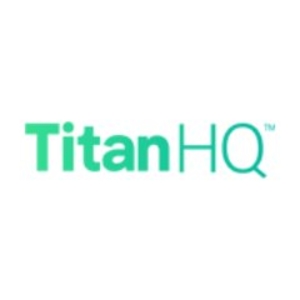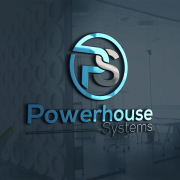What is our primary use case?
SpamTitan is our primary defense for email against spam and viruses.
We have it running on a virtual machine image that they gave us. It is hosted in our data center.
How has it helped my organization?
We have noticed a trend of approximately 5% growth in spam per year, versus legitimate email, and SpamTitan seems to catch almost all of it.
Using SpamTitan saves us a ton of time. We have users that get literally thousands of junk emails a day. The longer you are at an organization, the more spam you seem to accumulate, and it seems mostly the owner specifically. In our scenario, they went from getting like two or three thousand junk emails a day, to now just two reports a day. They don't have to go through each email to filter what's actual work and what's just junk.
We had some users that were spending two or three hours going through email. There is a huge difference for some people, although it depends on the user. Some people do not use email often so it's not really beneficial for them. For the people that spend a lot of time sending and receiving email, it's saved quite a bit of time. It is upwards of hours in a day. Also, it saves me a ton of time because it prevents them from clicking the wrong thing.
Twice a day, it sends a report of what it has caught. I haven't actually looked at the report in perhaps two years because the accuracy for my inbox was always dead on. At the same time, however, we have a lot of users that check the report all the time. One reason is that they may have a new client that is accidentally classified as spam, or they receive a legitimate email that contains a lot of spam keywords. One of our clients is a large equipment manufacturer and they send legitimate emails with marketing taglines that sometimes get flagged as spam. For the most part, we have very few false positives.
What is most valuable?
SpamTitan is good at catching zero-day viruses and spam messages.
One feature that helped us a lot in the past year is the Link Lock. It will check the URLs that are included in messages and if they're not trusted sites then the link will be blocked. For example, our users will receive an email that says something to the effect of "Your password is about to expire, so please click on the enclosed link." If they click on the link, it causes a huge headache for us. Now, it's automatically blocked, which saves us a ton of time.
The Link Lock feature will check every URL in your email against a database of legitimate URLs. A malicious URL might go to a phishing site or a hacker site but if it isn't in the list of valid URLs, it will respond with a message that says "Blocked by SpamTitan Link Lock". It re-writes the URL so that it goes through their server, rather than the URL itself.
We just recently turned on the geo-blocking feature to block emails from Russia and Ukraine. We don't monitor the email that is blocked, unless it comes under the "relay denied" classification. That is approximately 2% of our total intake.
We use the whitelist feature to allow exemptions based on trusted senders. This is an important feature because we have approximately 12 sub-companies, and there is a good deal of marketing material sent between people. We configure them as trusted senders so that the messages don't get classified as spam, due to a large amount of marketing material. The whitelist allows them to communicate with each other and not get filtered out.
The user interface is great. Everything is in the browser; it is easy to set up and there are not a lot of tabs.
Most of it is simple to use and the side that the user sees is pretty intuitive. That said, there are grades of difficulty based on user experience.
What needs improvement?
When an email is quarantined, there are a couple of different search filters to help find what you're looking for. Having more choices would be helpful because as it is now, we can search for inbound or outbound, the score, the subject, and the email address. I would like to see a filter for searching inside the message content when it is quarantined.
For how long have I used the solution?
I have been using TitanHQ SpamTitan for approximately seven years.
What do I think about the stability of the solution?
This is a stable product. Our current uptime is 412 days. It was offline at the time because we had an outage in our data center. We had something plugged in wrong, so the fault was on our side.
Our service from them has been steady, including our daily antivirus updates. We've not had any problems. Stability is very important to us because if this goes down then we don't get any email.
What do I think about the scalability of the solution?
We are not really seeing a heavy load on the machine that we host it on, so I assume it could go much higher. Now, we have a 500-user license, but we seem to be going over it every day. For example, at the moment, it's showing 755, so we're probably going to increase to a 1,000-user license when it comes up for renewal in another month.
With a current load of approximately 6%, I'm sure that it can easily go to 10,000 users on our hardware.
Everyone in the company uses it, although I and the CTO are the only two administrators. Our CTO takes care of the management, whereas I am the network/security administrator. I normally perform the maintenance, although the CTO does it sometimes.
How are customer service and support?
If I need support, I can immediately send a ticket and click connect on the website. They'll be able to go in and do whatever they need to fix an issue.
Initially, we were hesitant to join because they are based out of Ireland and we were concerned about being able to get support. However, it's never been an issue. I'm the main contact for support, and I might call them once a year for a weird issue. Usually, they get back to me within 30 minutes.
I would definitely rate their support a ten out of ten.
How would you rate customer service and support?
Which solution did I use previously and why did I switch?
Before SpamTitan, we used to use MailGate, from Tumbleweed. The biggest difference between these two products was the price. The functionality was very close to the same but SpamTitan is approximately 30% of the price. Similarly, both are pretty stable and I wouldn't say that one was more stable than the other.
We switched because everything seemed to be as good as it was with solutions from the other big providers, with a huge difference in cost.
How was the initial setup?
It took us approximately an hour to set it up, and most of that time was on Office 365 to route incoming mail through SpamTitan first.
Ease of setup is something that was more important to me than it was to management. They would have preferred to use a free, open-source product. The problem with the open-source products is that anytime we needed to make a configuration change, it would take three or four days of research to figure out how to do it.
This is in contrast to SpamTitan, where there are only eight or nine tabs, with eight or nine subtabs on each one. For the most part, setting it requires visiting perhaps six tabs. If you have a question about any of the features, there is a question mark icon on the browser explaining each one. It's pretty well organized from the administration side.
What about the implementation team?
We implemented it ourselves.
What was our ROI?
We have realized ROI from our time savings. It has saved me hundreds of hours because we have people in one department that would constantly click on links that were bad. Most people would know not to click on them but certain people would always click on malicious links. Once that happened, they had a virus and it was sending out viruses to everyone in their email contacts.
Every time that happened, it cost me between 50 and 60 hours of time to fix the problem. It was an absolute nightmare that used to happen once or twice per month, and now the incidence of that has gone down to almost nothing.
What's my experience with pricing, setup cost, and licensing?
We implemented SpamTitan over other solutions because of its price. The functionality of all of these services is pretty much even, with the main differences between them being support options and where you can deploy them.
For other vendors, we had to purchase their hardware or employ a cloud solution that adds thousands of dollars per year to the cost. SpamTitan is something that you can put on your own hardware and it runs great.
The only additional cost was for Link. It isn't expensive, at perhaps a dollar extra per user.
Which other solutions did I evaluate?
Management was interested in saving costs by using an open-source solution. However, they are more difficult and time-consuming to configure.
We also looked at Barracuda and we didn't find much difference between the two, except for cost. We chose SpamTitan because it is more cost-effective.
What other advice do I have?
We have not had any issues with the product, the pricing is probably better than most vendors, and the support is definitely top-notch.
My advice for others is that if you're looking for a simple solution that you can deploy quickly, especially if you're on a budget, then I definitely recommend SpamTitan. You can have a full solution within a day.
I would rate this solution a ten out of ten.
Which deployment model are you using for this solution?
On-premises
*Disclosure: PeerSpot contacted the reviewer to collect the review and to validate authenticity. The reviewer was referred by the vendor, but the review is not subject to editing or approval by the vendor.









